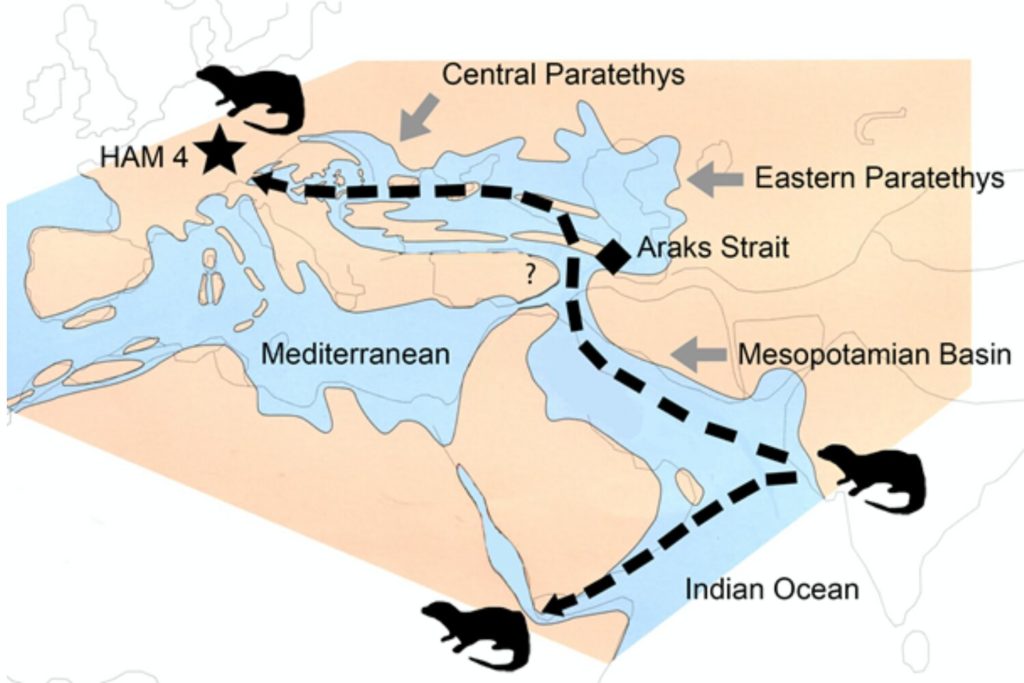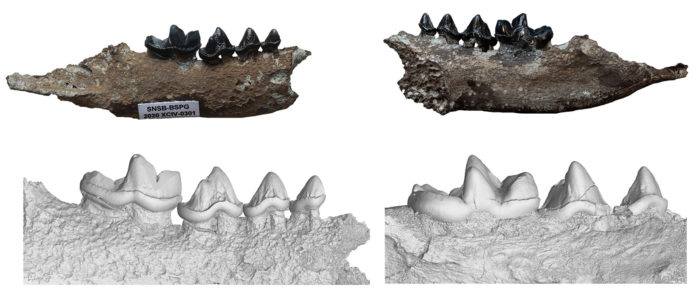While conducting excavations at the Hammerschmiede, scientists from the Universities of Tübingen and Zaragoza discovered a previously unknown otter species from 11.4-million-year-old strata.
The new species was named Vishnuonyx neptuni, meaning Neptune’s Vishnu otter. The Vishnu otter genus was previously known only from Asia and Africa.
The evolutionary history of the 13 otter species that occur today is still comparatively unexplored. Vishnu otters (Vishnuonyx) are mid-sized predators with a weight of 10 to 15 kilograms.
First discovered in sediments in the foothills of the Himalayas, the Vishnu otter lived 14 to 12.5 million years ago in the major rivers of Southern Asia.

The results from the study show that the Vishnu otters reached East Africa about 12 million years ago. They used to rely on water and could not travel long distances over land.
The discovery in the now 11.4-million-year-old layers of the Hammerschmiede is the first evidence that they also occurred in Europe—possibly spreading from India throughout the entire Old World. Its enormous dispersal of more than 6,000 kilometers across three continents was made possible by the geographic situation 12 million years ago.
Using computer-tomographic methods, scientists also visualized the most delicate details in the fossils’ tooth structure. The pointed cusps, cutting blades, and restricted grinding areas suggest a diet based primarily on fish.
Ecologically, Neptune’s Vishnu otter is thus more similar to the Eurasian otter than to the Pacific sea otter or the African and Asian clawless otters. Both groups prefer crustaceans or shellfish over fish in their diet.
Journal Reference:
- New early Late Miocene species of Vishnuonyx (Carnivora, Lutrinae) from the hominid locality of Hammerschmiede, Bavaria, Germany, Journal of Vertebrate Paleontology, DOI: 10.1080/02724634.2021.1948858
